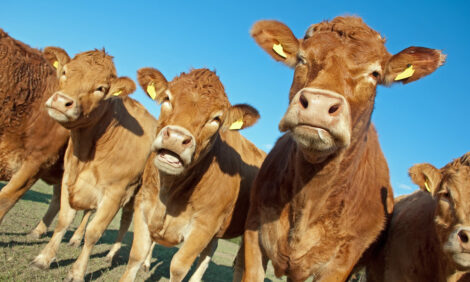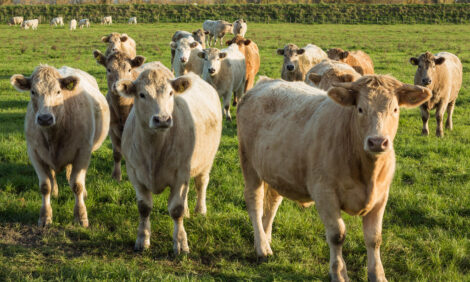



California dairy sector on track to reach net-zero by 2030
UC researchers examine California dairy's path to climate neutralityA new peer-reviewed study published by researchers from the CLEAR Center at the University of California at Davis shows the California dairy sector is on target to reach the state's world leading methane reduction goals and can reach climate neutrality by 2030.
The peer-reviewed study, published in CABI Biological Sciences, examined the California dairy sector's progress toward the target set by Senate Bill 1383—a 40% reduction of methane emissions below 2013 levels by 2030. Evaluating the atmospheric warming contributions from 2019 to 2030 under multiple scenarios, researchers identified potential pathways for the industry to not only meet but exceed SB 1383 requirements. The study also concludes the California dairy sector could each climate neutrality—contributing no additional warming to the atmosphere—as soon as 2027.
The study assesses the climate impacts of dairy farming considering the warming potential and life cycle of methane. Methane (the dairy sector's primary greenhouse gas) is a potent, but short-lived greenhouse gas that has a lifespan of about 12 years before being broken down into carbon dioxide and water vapor. Plant crops that are grown to feed dairy cattle absorb and sequester that carbon dioxide, in what is called a biogenic emission cycle. Ultimately, this cycle means that a near constant level of methane emissions contributes no additional warming to our climate, and a reduction in methane emissions can offset past warming contributions.
"What's most exciting about this study is that it shows the aggressive methane reductions the dairy sector has pursued will lead not only lead to a point in which they are no longer adding warming to the atmosphere, but can go further and chip away at historical emissions. Agriculture is one of the few sectors that can do that," said UC Davis professor and Air Quality Specialist, Frank Mitloehner. "The rest of the world is looking at how California is reducing methane, and sees that significant reductions are possible and have big impact on a sector's climate footprint."
Critical to accurately measuring the dairy sector's climate footprint, the researchers used a newer, more accurate metric for estimating global warming potential developed by scientists at University of Oxford, England, the global warming potential 'star' (GWP*). GWP* more accurately reports emissions as 'warming equivalents,' capturing the contrasting impacts of short- and long-lived greenhouse gasses, rather than calculating straight carbon dioxide equivalents (CO2e) as does the older, commonly used metric, GWP100.
The study is the first to look at how implementation of methane reduction strategies can reduce California dairy's atmospheric warming contributions.
"Aggressively reducing methane emissions across the California dairy industry can help it achieve climate neutrality within this decade," said UC Davis Ph.D. candidate Conor McCabe.
By increasing the use of dairy digesters, improving manure management, and utilizing feed additives, the industry can achieve climate neutrality as early as 2027. This will require widespread adoption of methane-reduction projects by California's dairy farmers.
"Many producers throughout the state have already implemented methane-reducing or methane-avoiding technologies on their dairies and have helped set the California dairy sector on a path to meeting the ambitious requirements of SB 1383," said Denise Mullinax, executive director of the California Dairy Research Foundation. "The pathways outlined in this study show the incredible potential our industry has in going beyond those requirements—to become climate neutral."
More than 250 California dairy farms have already implemented a methane reduction project—either implementing digesters to capture methane or alternative manure methane projects to avoid methane creation. The majority of such projects have been incentivized by the California Department of Food and Agriculture (CDFA)'s alternative manure management program (AMMP) and dairy digester research and development program (DDRDP).
Investing in the use of feed additives along with other methane-reducing technologies will increase California's role as a global leader in dairy sustainability. According to the study, feed additives used to reduce enteric methane are a promising area, with several additives expected to achieve regulatory approval within the decade. The additive used to model enteric methane reductions in the CLEAR Center study, 3-NOP, is currently approved and in use in Brazil, Chile, and the European Union, and could be approved for veterinary use in the US as early as 2024.
California's innovative, voluntary, and incentive-based approach continues to play a critical role in moving the state's dairy sector further toward its climate goals and will serve as a model for other states seeking to reduce emissions in the future.
Continuation of research and the adoption of new technologies and solutions will remain key to California dairy's success. Dairy farmers will need the continued support of incentive programs that provide the opportunities for dairy farmers to implement them, the study concludes.



